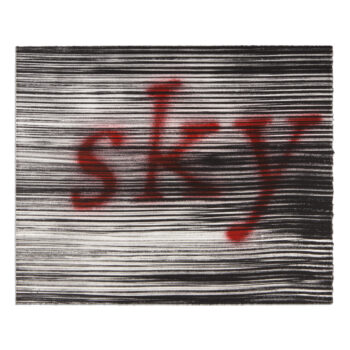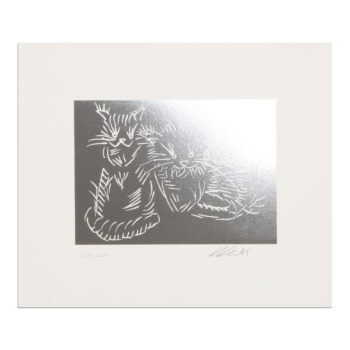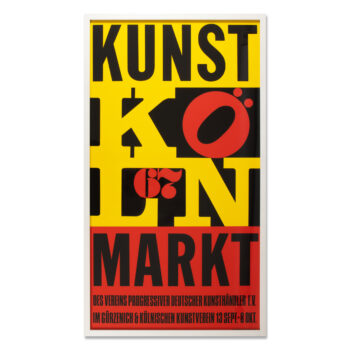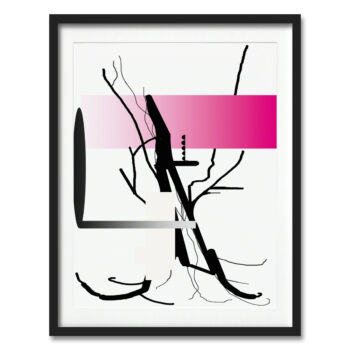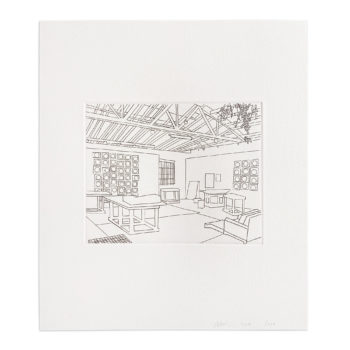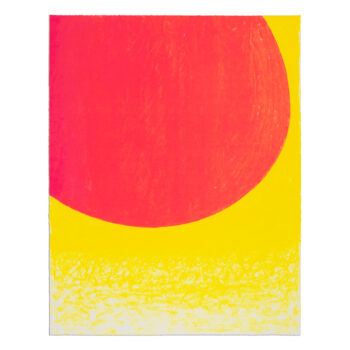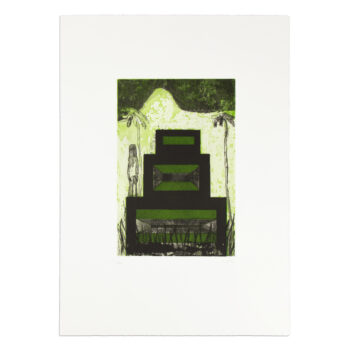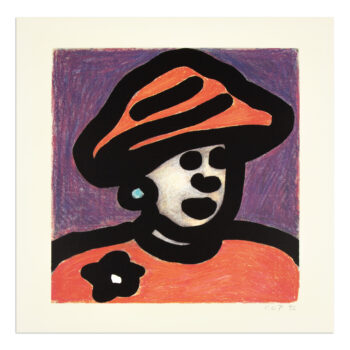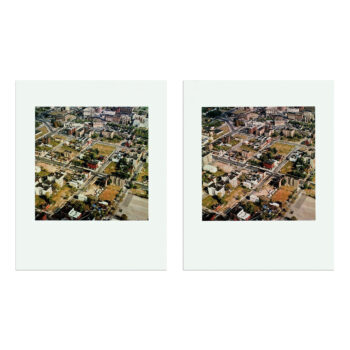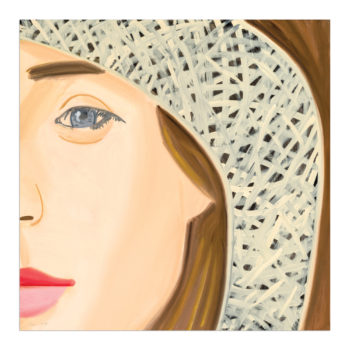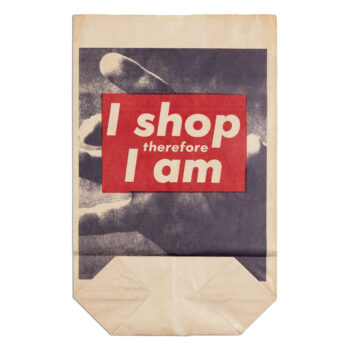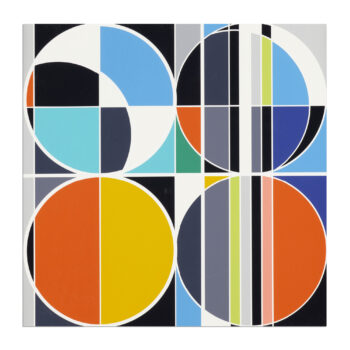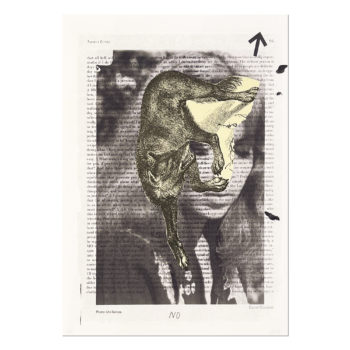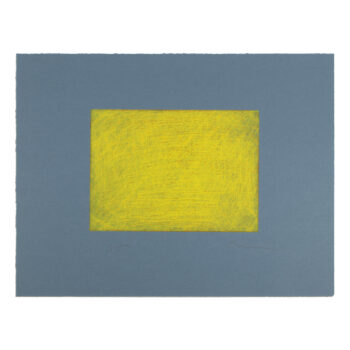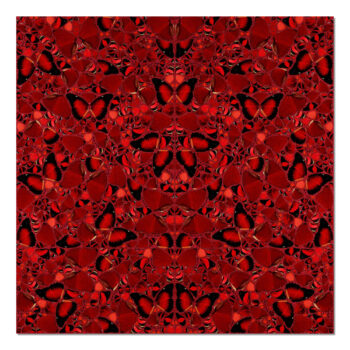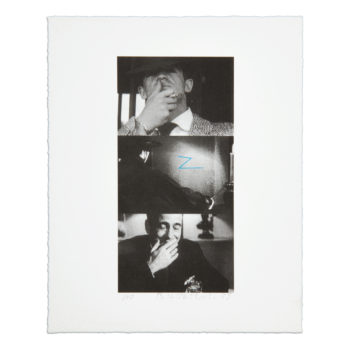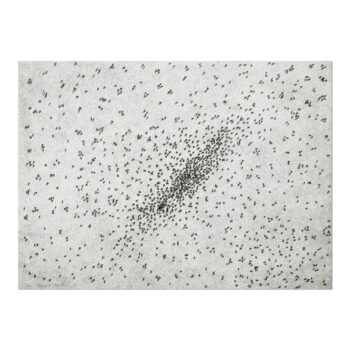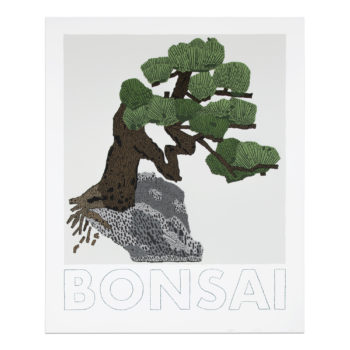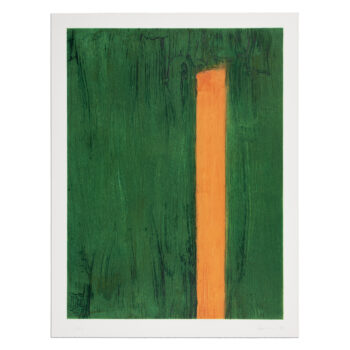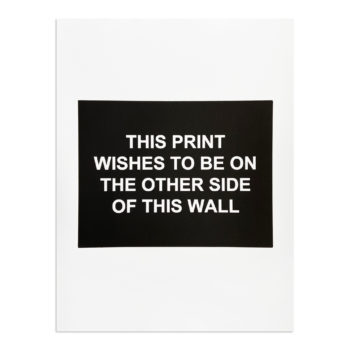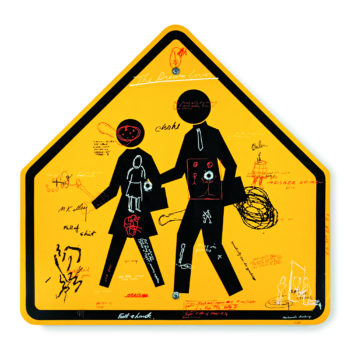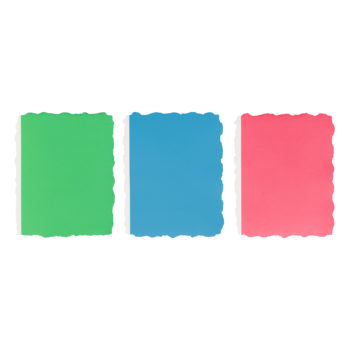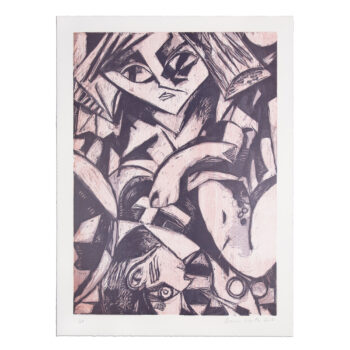Collect limited edition prints
Limited edition prints offer a unique intersection of accessibility and prestige, making them an enriching choice for collectors of all levels. Rooted in centuries of artistic tradition, fine art prints carry the mark of an artist’s vision while remaining approachable in both cost and display. With their scarcity enhancing value, and their portability suiting modern lifestyles, these prints are more than reproductions – they are works of art in their own right. Explore our fine selection of limited edition prints, now available for sale, and expand your collection meaningfully.
-
Andy Warhol – Lion
2.400,00 € -
Ellsworth Kelly – Die Welt
3.400,00 € -
Ed Ruscha – This Sky
13.500,00 € -
Günther Uecker – Lithograph from Nagelbuch
1.900,00 € -
-
JR – Los Surcos de la Ciudad
1.200,00 € -
Dan Flavin – For a pair of curvilinear walls
2.400,00 € -
Jorinde Voigt – Grüne Treppe
8.500,00 € -
Wes Lang – Grateful Dead
1.900,00 € -
Peter Blake – The London Suite
17.500,00 € -
Wolfgang Tillmans – Kepler Venice Tables
1.300,00 € -
Chris Ofili – Untitled (from Stütz-Mappe)
1.900,00 € -
Mel Ramos – Señorita Rio
2.800,00 € -
Daniel Richter – Greif zur Feder
1.900,00 € -
Peter Doig, Lapeyrouse Wall
5.600,00 € -
Richard Anuszkiewicz – 6 Seritypien
7.600,00 € -
Tracey Emin – This is Forever
7.800,00 € -
-
Ai Weiwei – Cats (Silver)
2.200,00 € -
Richard Prince – Black Bra
1.900,00 € -
Günther Förg: Capri – 6 Cantos
18.000,00 € -
Marcel Dzama: The Arrow of Truth
2.200,00 € -
-
Ed Ruscha: Mr. Ray
11.000,00 € -
Lisa Yuskavage, Night Flowers
4.000,00 € -
C.O. Paeffgen – Scheich
800,00 € -
Günther Förg, Blau, grün, blau
2.900,00 € -
Grayson Perry – Magical Thinking
3.000,00 € -
Antoni Tàpies – La Llum
9.600,00 € -
David Shrigley – Small Print
850,00 € -
Peter Doig – Untitled (Winter Scene)
3.800,00 € -
-
Tracey Emin – I Just Felt Hurt
7.800,00 € -
Robert Indiana, Kunstmarkt Köln 67
1.300,00 € -
Arnulf Rainer – Grüner Strom
3.000,00 € -
Marcel Dzama – Midnights Moon Light
2.200,00 € -
Georg Baselitz – Base
3.000,00 € -
Georg Baselitz – Der Berg
1.400,00 € -
Mel Ramos – Phantom
2.800,00 € -
Jonas Wood – Bball Studio
2.800,00 € -
France-Lise McGurn – In Pub-lik 9
6.000,00 € -
Wolfgang Tillmans – Freischwimmer TfL
2.900,00 € -
-
Zhang Xiaogang – Two Sisters
3.200,00 € -
Georg Baselitz – Serpentine (Green)
2.900,00 € -
David Shrigley, Shut Up and Eat Your Fries
2.600,00 € -
Cindy Sherman – Untitled 103
2.200,00 € -
Georg Baselitz – Abe
3.000,00 € -
-
Elizabeth Peyton – E (Self-Portrait)
3.700,00 € -
Georg Baselitz, 45 – August
8.400,00 € -
Günter Fruhtrunk, Farbbewegungen
5.400,00 € -
Jorinde Voigt, Sara’s Question VI
7.200,00 € -
Tracey Emin, Choose Love
8.400,00 € -
Arnulf Rainer, Self-Portrait
2.500,00 € -
Rupprecht Geiger, Rot zu Gelb
3.800,00 € -
Damien Hirst, Savoy
14.500,00 € -
Jorinde Voigt, Sara’s Question IV
7.200,00 € -
Marlene Dumas – Faceless
4.200,00 € -
Cecily Brown – The Last Shipwreck
3.800,00 € -
Anni Albers – ST
3.900,00 € -
Ellsworth Kelly, Small Black Curve
13.000,00 € -
Claes Oldenburg, Nose Handkerchief
1.900,00 € -
Günter Fruhtrunk, Zwischen Grün
1.500,00 € -
Cindy Sherman – Untitled (Parkett 29)
4.400,00 € -
-
Jorinde Voigt, Sara’s Question III
7.200,00 € -
-
Joseph Kosuth, Map to Indicate (E.L., L.C.)
4.700,00 € -
Peter Doig – Maracas
4.000,00 € -
C.O. Paeffgen, Untitled
800,00 € -
-
Takashi Murakami – Flowers of Gratitude
2.800,00 € -
Wolfgang Tillmans, Speedmaster #2
4.400,00 € -
Mel Ramos – Superman
3.000,00 € -
-
Sol LeWitt – Isometric Figures I
3.900,00 € -
Sarah Morris, Deviancy is the Essence
3.400,00 € -
Christo – Corridor Store Front (Monuments)
4.600,00 € -
-
-
Joel Mesler, Thank You
7.000,00 € -
Sol LeWitt – Isometric Figures IV
3.900,00 € -
Kara Walker, Theme for the Fons Americanus
2.200,00 € -
-
Otis Kwame Kye Quaicoe, View of Yoei William
9.000,00 € -
C.O. Paeffgen, Queen
1.000,00 € -
André Butzer, Untitled (Yellow)
2.700,00 € -
Georg Baselitz – Grüner Hase
4.600,00 € -
Rashid Johnson – Untitled Anxious Print
4.900,00 € -
-
Ellsworth Kelly, Braunwald
12.000,00 € -
Günther Uecker, Prägedruck (from Nagelbuch)
2.400,00 € -
Genieve Figgis, Picnic
6.000,00 € -
-
Ai Weiwei, Middle Finger in Red
1.800,00 € -
-
Robert Longo – Black Palms
3.400,00 € -
Rupprecht Geiger, Black on Different Reds
1.700,00 € -
Günther Uecker, Lichtungen IV
1.700,00 € -
Thomas Ruff, 3-D New York (Bronx)
1.200,00 € -
Invader, Rubik Shot Red Marilyn
5.400,00 € -
Damien Hirst, Taytu Betul (H10-5)
4.900,00 € -
Richard Long – Two Sahara Works
3.200,00 € -
Rupprecht Geiger, Red on Violet
1.700,00 € -
Günther Förg, Coda
5.500,00 € -
Georg Baselitz – Serpentine (Blue)
2.900,00 € -
-
-
Wes Lang, Thoughts For The Free Life #15
2.800,00 € -
Sarah Morris, Color Referents (Miami)
4.500,00 € -
Brice Marden, Etching for Parkett
6.500,00 € -
Claire Tabouret, Self-Portrait (Blue)
4.400,00 € -
Alex Katz, Straw Hat 1
22.500,00 € -
JR, Olho, Estadio de Pacaembu
1.400,00 € -
Elizabeth Peyton – Frederick Douglass
3.500,00 € -
Günter Fruhtrunk, Schwarz-Grünes Kontinuum
1.000,00 € -
Anne Imhof, YOUTH
2.800,00 € -
Carmen Herrera, Rojo y Negro
9.000,00 € -
Kara Walker, Boo-Hoo
13.500,00 € -
Robert Mangold, Arabesque I
3.000,00 € -
-
Günter Fruhtrunk, Orgelpunkt
950,00 € -
Joseph Beuys – Initiation Gauloise
3.000,00 € -
-
Invader, Rubik Camouflage
5.400,00 € -
Rupprecht Geiger, Cold Reds on Warm Reds
1.700,00 € -
Günther Uecker, Untitled (from Nagelbuch)
1.900,00 € -
Eddie Martinez, Bufly (GPBF)
4.600,00 € -
Ai Weiwei – BOMB
1.900,00 € -
Harland Miller, Hate’s Outta Date
12.000,00 € -
Georg Baselitz, Farewell Bill #4
5.200,00 € -
André Butzer, Katze
2.800,00 € -
Otis Kwame Kye Quaicoe – Rancher
4.000,00 € -
Wes Lang, Everything
1.600,00 € -
-
Sigmar Polke, Oelbild (Näherin)
900,00 € -
France-Lise McGurn, Papillon
2.500,00 € -
Rupprecht Geiger, Yellow on Orange
2.200,00 € -
Georg Baselitz, Winterschlaf X
7.700,00 € -
Jadé Fadojutimi, A Season’s Echo
7.500,00 € -
Sarah Morris, Sony (Los Angeles)
2.200,00 € -
Günther Förg, 6 Radierungen
11.000,00 € -
Sarah Morris, Taurus (Origami)
2.200,00 € -
France-Lise McGurn, Dream Bod and Bronco
1.300,00 € -
-
Gert & Uwe Tobias, Untitled
1.200,00 € -
Georg Baselitz, Winterschlaf I
7.700,00 € -
Jorinde Voigt, Immersion VII
3.400,00 € -
Georg Baselitz, Farewell Bill #7
5.200,00 € -
Rupprecht Geiger, Blue-Black and Bluish Red
1.700,00 € -
Mel Ramos – Wonder Woman 3
2.800,00 € -
-
Joseph Beuys, Order
950,00 € -
Sarah Morris, Total Lunar Eclipse
2.600,00 € -
Rupprecht Geiger, Yellow on Red
2.200,00 € -
JR, Women Are Heroes
1.900,00 € -
Ai Weiwei – Cats (Black)
2.400,00 € -
-
Julie Mehretu, Privileges Taken for Granted
4.000,00 € -
Cecily Brown – All the Nightmares Came Today
2.700,00 € -
Sigmar Polke, Untitled (Griffelkunst 1989)
2.800,00 € -
Arnulf Rainer, Büste im Nebel
2.400,00 € -
Rupprecht Geiger, Violet on Warm Red
1.700,00 € -
Joseph Beuys, 7000 Eichen
1.400,00 € -
Joseph Beuys, Parteiendiktatur
1.000,00 € -
-
Laure Prouvost, Nice to not be a screen
1.300,00 € -
Daniel Richter, Untitled
3.000,00 € -
Wes Lang, To Tell the Truth
4.000,00 € -
Damien Hirst, Suiko (H10-4)
4.900,00 € -
David Shrigley, The Moon Makes Us Crazy
2.200,00 € -
JR, Ballet, Palais Royal
2.400,00 € -
Daniel Richter, Untitled (Fuchs)
3.000,00 € -
Arnulf Rainer, Mar Azul
3.900,00 € -
Jonas Wood, Kiki and Leopard
9.000,00 € -
Sol LeWitt, Arc and Bands in Colors 2
4.900,00 € -
Daniel Richter, Untitled (Paris Sexy 65)
3.000,00 € -
Ai Weiwei, History of Bombs
700,00 € -
Arnulf Rainer, Gelbes Meer
3.600,00 € -
Marina Abramović – 512 Hours
1.800,00 € -
Chris Ofili, Afternoon with La Soufrière
3.800,00 € -
-
Fred Sandback, Untitled (1979.03)
3.800,00 € -
Tunji Adeniyi-Jones, Poetic Feet
1.900,00 € -
Christo – Iron Curtain (Wall of Barrels)
3.900,00 € -
Damien Hirst, Theodora (H10-3)
4.900,00 € -
André Butzer, Untitled (Smileys)
2.700,00 € -
-
Ed Ruscha, Insect Slant (Ants)
9.000,00 € -
Günther Förg, Untitled (Portfolio Pi)
2.600,00 € -
France-Lise McGurn, In Pub-lik 5
6.000,00 € -
Arnulf Rainer, Drahtwolke
3.800,00 € -
Anne Collier, Woman Crying
3.400,00 € -
Nicolas Party, Portrait with Shells
4.200,00 € -
-
Carmen Herrera, Untitled (Red and White)
4.600,00 € -
André Butzer, Untitled (Purple)
2.700,00 € -
Tracey Emin – Sixteen
3.400,00 € -
Carmen Herrera, Untitled (NRW)
9.800,00 € -
Albert Oehlen, Cezanne
1.000,00 € -
-
-
KAWS, Gone
5.600,00 € -
Peter Doig – Two Students
2.000,00 € -
Jonas Wood, Bonsai
5.400,00 € -
André Butzer, Untitled (Wanderer)
1.900,00 € -
Yoshitomo Nara, Miss Spring
4.900,00 € -
André Butzer, Pastrami
2.700,00 € -
André Butzer, Dr. Pfeffer
2.700,00 € -
Adam Pendleton, Who Is Queen?
12.500,00 € -
Gerhard Richter, Cage (P19-3)
25.000,00 € -
Jonas Wood, Jungle Kitchen
15.000,00 € -
Peter Doig – Boathouse
3.800,00 € -
Christopher Wool – Portrait (yellow)
3.800,00 € -
Elizabeth Peyton – Frank Ocean
4.200,00 € -
Marlene Dumas, United Europe
6.400,00 € -
Damien Hirst, Earth (from The Elements)
26.000,00 € -
Luc Tuymans – Altar
5.500,00 € -
-
Jonas Wood, Holiday
6.900,00 € -
Joseph Kosuth, L’Essence de la rhétorique…
1.800,00 € -
Günther Förg – Hora
2.500,00 € -
Jenny Holzer – Water Board 0000090
1.900,00 € -
Rupprecht Geiger, Bluish Red and Blue-Black
1.700,00 € -
Adam Pendleton, Mask
3.500,00 € -
David Shrigley, I Hate Human Beings
4.500,00 € -
David Shrigley, Talk to the Hand
2.600,00 € -
Jonas Wood – Bananas
4.600,00 € -
-
Elizabeth Peyton – The Kiss
3.200,00 € -
Adam Pendleton, What is the Black Dada
11.500,00 € -
Sarah Morris, London
1.200,00 € -
Wade Guyton, Red Fire for SMC
1.600,00 € -
Damien Hirst – Forever (Small)
1.150,00 € -
France-Lise McGurn, In Pub-lik
5.500,00 € -
Damien Hirst – Fruitful (Small)
1.400,00 € -
David Shrigley, To Hell With Zoos
6.500,00 € -
Dan Flavin, Projects 1963-1995
1.900,00 € -
JR, Death Valley Billboard
2.000,00 € -
David Shrigley, We Won the Race
2.800,00 € -
Damien Hirst, Loyalty
22.000,00 € -
Katharina Grosse, Der Stuhl
1.800,00 € -
Jonas Wood, Bromeliad
5.400,00 € -
-
Richard Tuttle, Surface
1.300,00 € -
Günther Uecker, Lichtungen III
1.700,00 € -
David Shrigley, The World
4.900,00 € -
Chris Ofili – Poolside
2.700,00 € -
Chris Ofili – Untitled (Portrait)
4.000,00 € -
David Shrigley, Fat Pig We Love You
2.600,00 € -
JR, Kikito
1.500,00 € -
Imi Knoebel, Gelbe Fahne
2.800,00 € -
Chris Ofili, R.I.P. Stephen Lawrence
2.400,00 € -
Gilbert & George, The Singing Sculpture
3.000,00 € -
-
-
Grayson Perry, Sponsored by You
15.000,00 € -
-
Elizabeth Peyton – Lou Reed + Rachel
3.800,00 € -
Shepard Fairey – Parlor Pattern
2.400,00 € -
JR, In the Container Wall
2.400,00 € -
David Shrigley, Light
2.800,00 € -
John Baldessari – Belch
2.800,00 € -
Ed Ruscha, America Whistles
9.500,00 € -
-
Elizabeth Peyton – Peter
3.700,00 € -
Sigmar Polke, Dr Pabscht het z’Schpiez …
7.000,00 € -
Elizabeth Peyton, Still Life
5.500,00 € -
Günther Uecker, Splitter
1.400,00 € -
Peter Halley, Cartoon Explosion
1.300,00 € -
Luc Tuymans, Wenn der Frühling kommt
4.000,00 € -
Jenny Holzer – AKA
3.500,00 € -
John Baldessari – Man with Snake
3.000,00 € -
Christo, Wrapped Chair
6.000,00 € -
Peter Halley, Organizational Charts
3.000,00 € -
Ed Ruscha, L.C.
5.400,00 € -
-
David Shrigley, Eyes
3.800,00 € -
-
Elaine Sturtevant, Duchamp Triptych
2.000,00 € -
Günther Uecker, Lichtungen I
1.700,00 € -
Daniel Richter, The War is Over!
5.400,00 € -
Daniel Richter, Talk is Cheap
5.400,00 € -
Richard Tuttle, Homesick as a Nail
1.500,00 € -
David Shrigley, Particles of Truth
2.900,00 € -
Dan Flavin, Untitled (Triptych)
3.500,00 € -
Dana Schutz, Back Surgery in Bed
3.400,00 € -
John Baldessari, Give me a B, give me an A…
1.600,00 € -
Sigmar Polke, S. schmeckt Pfirsich von H.
4.900,00 € -
Jorinde Voigt, Inherited Desire
2.400,00 € -
Luc Tuymans, Superstition
1.600,00 € -
Shepard Fairey, Ideal Power Dove
800,00 €
What are limited edition prints?
Whether for starting to buy art or for diversifying a collection, limited edition prints (also called fine art prints) are a great way to acquire original and important art at an affordable price. A print is a work of art made in multiple identical impressions, created through a transfer process. There are many different printing techniques, but the four most widely known types of prints are woodcut, etching, lithography and screenprint.
Whilst fine art prints are mostly artworks on paper, they can also be printed on fabric, metal, wood or other materials. If the number of prints from a single plate of printing surface is restriced to a specified number, they are considered limited edition prints. The edition size can either be dictated by the technique or be restricted and defined by the artist and printmaker. In either case the printing surface is typically destroyed after the printing process has been completed.
Although differing from unique artworks, limited edition prints are nonetheless regarded as an art form in its own right, clearly distinguishing themselves from reproductions. Artists make fine art prints for a variety of reasons. Some are interested in specific technical possibilities, or are drawn to a print’s potential to document each stage of a creative process. Others produce prints to make their art more accessible to a wider audience, or to provide financial support to cultural institutions.
“Among the many sectors of the art market, limited edition prints may be especially well suited to being presented, appreciated, and acquired online. The artworks, broadly speaking, are two-dimensional and translate well on-screen. Prices also tend to be more affordable—six-digit Dürers notwithstanding—and, for the housebound and data-obsessed collector, there’s plenty of research available for perusal.” – Benjamin Sutton, Artsy, Mai 22, 2020

Guide to buying limited edition prints
When you’re drawn to a print and considering a purchase, delving into the artwork’s edition information is crucial. These details not only help gauge the long-term value of the limited edition print but also provide insights into the artist’s market presence. You can typically find this information in our artworks’ description, and for additional context, it is worthwhile viewing an artist’s catalogue raisonée (a comprehensive, annotated listing of all the known artworks by an artist).
The edition size is fixed
Limited edition prints enable artists to create multiple versions of their artwork. While these pieces are not unique, they are original artworks and hold significant importance to the artist, akin to singular creations. In limited editions, the artist caps the number of prints made, preserving each artwork’s value over time. To ensure no further copies can be added, the physical means of production, such as printing plates, are often destroyed. Helpful: Verify that the print is from the first edition, as this can affect value. Later editions or those made posthumously can be less valued due to their divergence from the artist’s original vision.
All prints are identical
Each print within a limited edition should be identical. If a work stands out as different, it may not belong to the standard edition. Artists number each piece in an edition, and while many assume this numbering reflects the order of printing, it is generally random, occurring as the artist signs and dates the prints. Hence, the numerical sequence, such as 1/50 or 50/50, typically does not impact the resale value. Interesting: Sometimes prints are priced differently within the same edition based on demand, with later numbers costing more due to their scarcity as the edition sells out.

Value depends on edition size
Smaller limited editions tend to enhance the rarity—and thereby the value—of each print within them. For instance, a print by Georg Baselitz in an edition of 12 is likely more valuable than one from an edition of 100. The edition size can vary greatly, influenced by the artist’s technique and the artwork’s demand. Techniques that wear out, like certain types of printmaking, usually result in smaller editions, while more durable methods may allow for larger editions.
Proofs affect edition sizes
Limited edition prints often include a small number of artist’s proofs, denoted as “AP” or “A/P” in the edition details. These are aside from standard proofs like RTP or BAT (used as guides during production) or printer’s proofs. Traditionally reserved for personal use by artists, these proofs can be more valuable, particularly if they include unique features or artist’s annotations. Typically, artist’s proofs do not exceed 10% of the total edition size.

Buy limited edition prints online. Catering art collectors from around the globe, MLTPL focusses on the specific needs of online buyers: transparent pricing, accurate condition reports, professional packaging and quick shipping.
MLTPL ships worldwide. We focus on professional packaging and fully traceable shipping. Where possible, we ship our limited edition prints flat between fiberboards and two layers of solid cardboard. We aim to dispatch in under 5 days.
All shipped limited edition prints are covered by our door-to-door transport insurance. In the unlikely event of physical damage or loss, the artwork will therefore be fully insured.
When buying limited edition prints online, the artwork’s condition and its truthful description are key. We follow a rigorous standard when selecting new artworks for our collector base, whilst providing accurate condition reports and high-resolution images.




